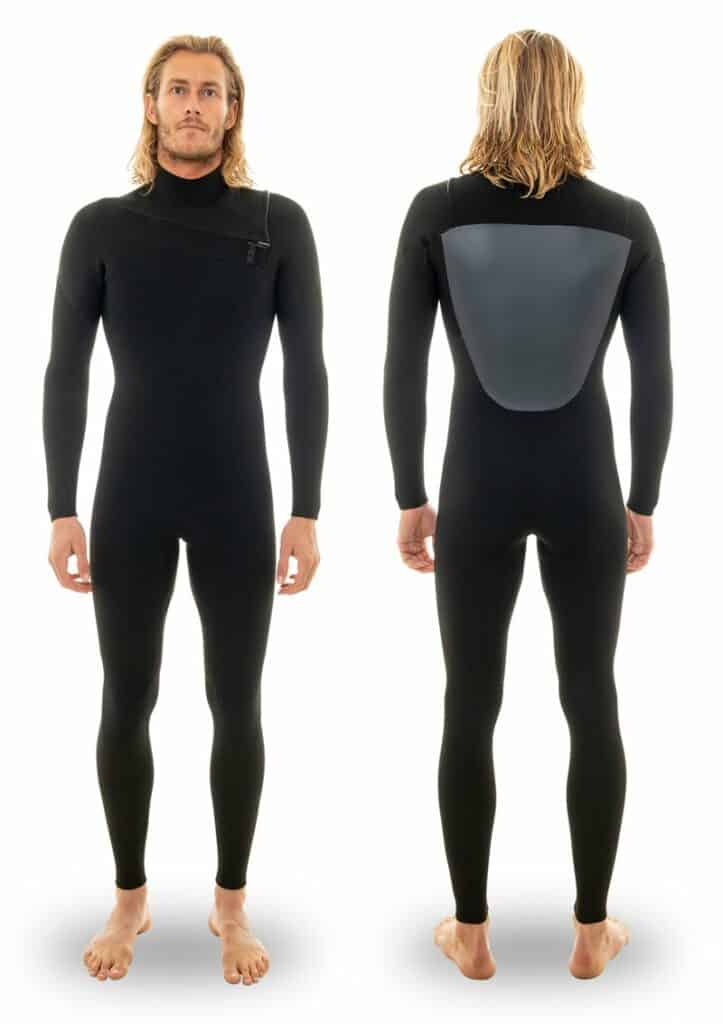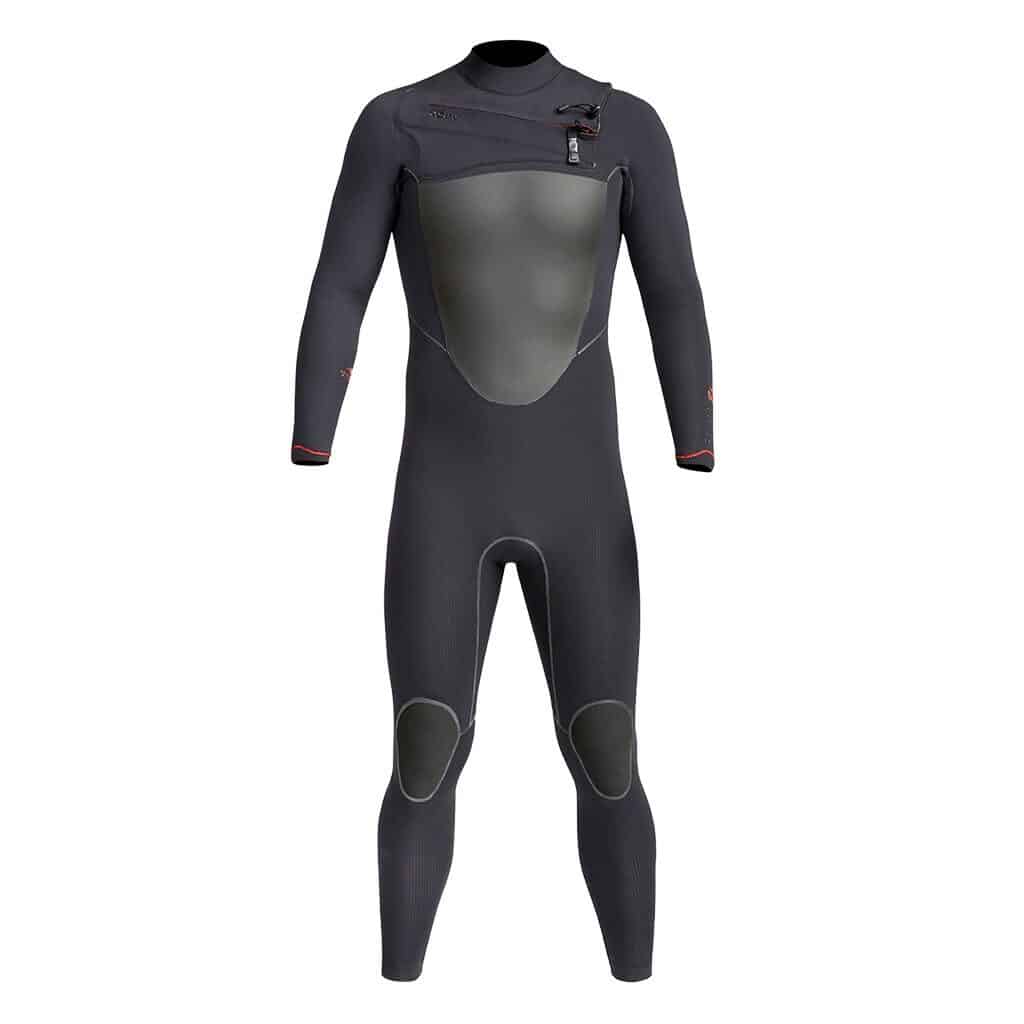For a large portion of the world’s surfers, a 3/2 wetsuit is a staple of their wetsuit requirements. Unless you live in extremely cold conditions all year round, you’ll probably find yourself in the market for a 3/2 wetsuit at one time or another. For warmer water surfers, the 3/2 may be the thickest wetsuit in your collection.
Bridging a fairly wide water temperature gap between approximately 15 degrees and 18 degrees Celsius (56-65 F), the key function of a quality 3/2 wetsuit is to strike a balance between warmth and flexibility and at these temperatures surfers ultimately want the best warmth they can get for the highest performance.
The wetsuit market has so much to offer and with so many decent options from most brands in the 3/2 wetsuit range, choosing the right wetsuit comes with its challenges. But don’t worry, we have done a lot of research and compiled the best 3/2 wetsuit Buyers Guide to save you time and money.
We consider both mens and womens 3/2 wetsuits in this guide.
NOTE: Some links within this article are affiliate links, if you do click through and end up purchasing, we receive a small commission at no additional cost to you.
Table of Contents
Comparison Table
|
Products |
Best For |
Materials |
Zipper Design |
Thickness & Temp Range |
Price Point | Check Prices |
| Patagonia R1 Wetsuit
| Best Overall | Yulex natural rubber | Chest Zip | 3/2.5 mm
16C to 18C (60-65F) | High End
Circa $430 (US) | Mens
|
|
Best Value |
Limestone Based Neoprene |
Chest Zip & Backzip |
3/2 mm 14c to 20c (57 to 68F) |
Mid Point Circa $200 – 225 (US) |
| |
| O’Neill Hyperfreak 3/2 Wetsuit
| Best mid priced high performance | Technobutter Neoprene (Limestone based) | Chest Zip | 3/2 mm
14 to 17C (57 to 63F) |
Mid Point Circa $310 (US) | Mens
|
| Xcel Drylock 3/2 Wetsuit (& Drylock X)
| High end features and warmth | Nanoprene Lite Japanese Limestone neoprene |
Chest Zip |
3/2 mm 13 to 18 C (55 to 65C) |
High End Circa $395-485 (US) |
|
| Xcel Infiniti 3/2 Wetsuit
| High Performance |
Nanoprene Lite Japanese Limestone neoprene |
Chest Zip | 3/2 mm
16 to 18C (60 to 65F) | Mid Point
Circa $300 (US) | Mens
|
| Vissla 7 Seas/ Sisstrevolution 7 Seas 3/2 wetsuit
| Value, performance and warmth |
Limestone Based Neoprene | Chest Zip & Back Zip options | 3/2 mm
13 to 18C (55 to 65F) | Mid Point
Circa $350 (US) | Mens
|
| O’Neill Reactor 3/2 wetsuit
Read more here | Best Entry Level Wetsuit |
Neoprene | Back Zip | 3/2 mm
16 to 18C (60 to 65F) | Low
Circa $110 (US) | Mens
|
3/2 Wetsuit Reviews
1. Patagonia R1 Wetsuits – Best Overall Wetsuits
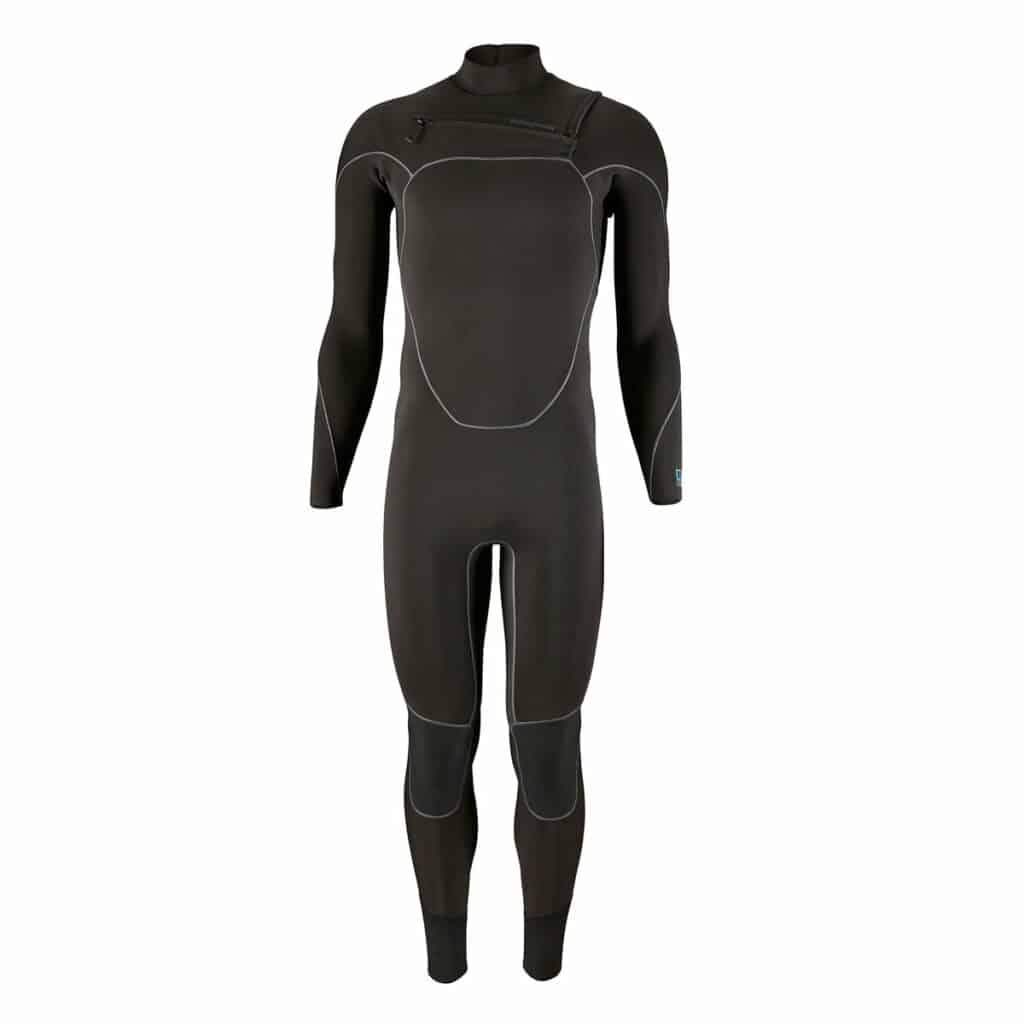
Specifications:
- Materials: 85% Yulex, and 15% Synthetic Rubber.
- Zipper Design: Front Zip and Back Zip available
- Thickness: Torso/thighs – 3mm, Arms/legs – 2.5mm
- Suitable Temperatures: 16C to 18C.
- Weight: 36 ounces.
Features:
The Patagonia 3/2 wetsuit is the R1 which is 3mm on body and slightly thicker than others at 2.5mm on arms/legs providing a touch more warmth.
Patagonia has used natural rubber (Yulex) to manufacture these wetsuits is certified for the Forest Stewardship Council under the Rainforest Alliance’s authority, and it is fair to say that Patagonia is leading the charge in more environmentally friendly wetsuit manufacturing. If that’s important to you, these high quality wetsuits are a no brainer. The suit also features a warm thermal lining made of 95% recycled polyester and 5% spandex that tends to dry quickly and maintains warmth.
Previous iterations of the Patagonia wetsuits has been lack of flexibility but the feedback from customers on the latest wetsuits is overwhelmingly positive with regard to this.
Pros:
- Warm, comfortable and flexible
- Environmentally responsible materials and manufacturing using Patagonia’s natural Yulex rubber
- Durability – Patagonia are well regarded for the longevity fo their wetsuits
Cons:
- No key pocket
Summary:
Overall, this is one of the best wetsuits you will find on the market in terms of performance, quality and environmental friendly production and materials.
2. Need Essentials 3/2 Wetsuit – Best value
Specifications:
- Materials: Limestone based Neoprene with rapid-dry thermal lining
- Zipper Design: Front Zip & Back Zip options available
- Thickness: Torso/thighs – 3mm, Arms/legs – 2mm
- Suitable Temperatures: 14C to 20C.
- Internal key stash
About:
The Need Essentials 3/2 wetsuit is a fantastic value proposition for surfers. The Australian brand has quickly grown and is now popular across the US and Europe due to their low cost, high quality wetsuits which are designed around the only what is needed philosophy. 100% glued, blindstiched and internally taped and with fast dry thermal lining – these suits are rated for 14-20C temperatures, so they are warmer than your average 3/2 wetsuit.
Check out our indepth review of the Needessentials 3/2 mens wetsuit HERE.
Pros:
- Very Affordable considering the high quality
- Lack of branding
Cons:
- Some report the wetsuits take a while to soften, which is not uncommon with many wetsuits
Summary:
Overall, one of the best value wetsuits available for price/quality ratio. The Needessentials direct to consumer approach keep costs significantly lower than the big brands and that’s all to the customer’s benefit.
3. O’Neill Hyperfreak 3/2 Wetsuit – Top Performance and Flexibility
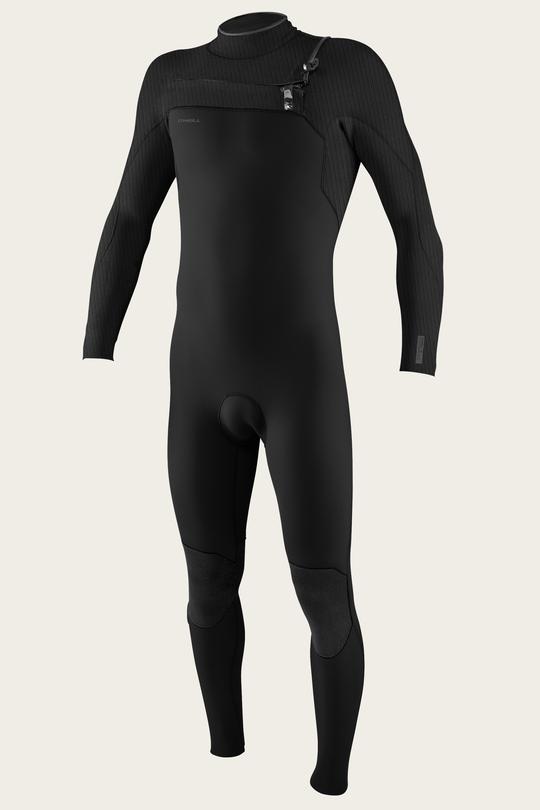
Specifications:
- Materials: Neoprene (O’neill’s Technobutter 3 Neoprene)
- Zipper Design: Chest Zip & Zipperless options
- Thickness: Torso/thighs – 3mm, Arms/legs – 2.5mm
- Suitable Temperatures: 14C to 17C.
About:
People are loving this mid priced O’Neill 3/2 Wetsuit in both mens and womens. The O’Neill Hyperfreak series is being praised for it’s supreme comfort, flexibility and therefore performance. I’ve got a 2mm long arm Hyperfreak springsuit myself and can definitely vouch for that feedback.
We’ve also had a very positive review of the O’neill Hyperfreak 3/2 which you can read HERE.
Pros:
- Minimal seam design including seamless around the shoulder/arm pit for comfort in paddling
- Lightweight, and super stretchy Technobutter neoprene
- Good durability
Cons:
- Somewhat less warmth than other 3/2 wetsuits on this list
4. Xcel Drylock (& Drylock X) – High end features and warmth
Specifications:
- Materials: Nanoprene Lite Japanese Limestone neoprene
- Zipper Design: Chest Zip.
- Thickness: Torso/thighs – 3mm, Arms/legs – 2mm
- Suitable Temperatures: 13C to 18C.
- Weight: 45 ounces.
Features:
Being a specialised wetsuit only business, Xcel Wetsuits are known for their high quality, performance and durability.
The Xcel Drylock series is their high end wetsuit line and comes in two editions; the regular Drylock and the premium Drylock X (we’ll discuss the difference between the two below).
Xcel has specifically focused on making an easy entry design, and there is a magnetic closure. Engineered with precisions, the wetsuit ensures a superior fit and also features wrist seals and knee flex grooves. Triple glued with blind stitching, these wetsuits perform very well.
What is the difference between the Xcel Drylock and the Drylock X?
Both are lined with Celliant Black although the Drylock X has more of a high pile Celliant Black lining which runs from the chest to the knees where the Drylock is mostly low pile except the high pile chest panel. This gives the Drylock X greater warmth.
- The Drylock has triple glued and blindstitched seams while the Drylock X has a stitch-free power seam, which basically means more warmth but slightly less stretch.
- The Drylock has a semi-dry zipper which is the same as the other premium suits in the Xcel range while the Drylock X has a 100% water-resistant zipper that locks water out.
- The Drylock has Channel Flex on the upper body only while the Drylock X has a full Channel Flex exterior.
Pros:
- Top of the line flexibility and performance equalled by high warmth factor
- Xcel’s inner lining “Celliant Black” provides amazing warmth
- Triple glued with bling stitching.
- Great durability
Cons:
- Expensive (particlulalry the Xcel Drylock X which is the most expensive wetsuit on this best of list.
Summary:
The Drylock from Xcel Wetsuits is a high end, high performing and very warm wetsuit. If you’ve got a good budget and if you’re looking for the most out of a 3/2 wetsuit and surfing at the lower end of temperatures you can’t go wrong with these wetsuits.
5. Xcel Infinti 3/2 Wetsuit
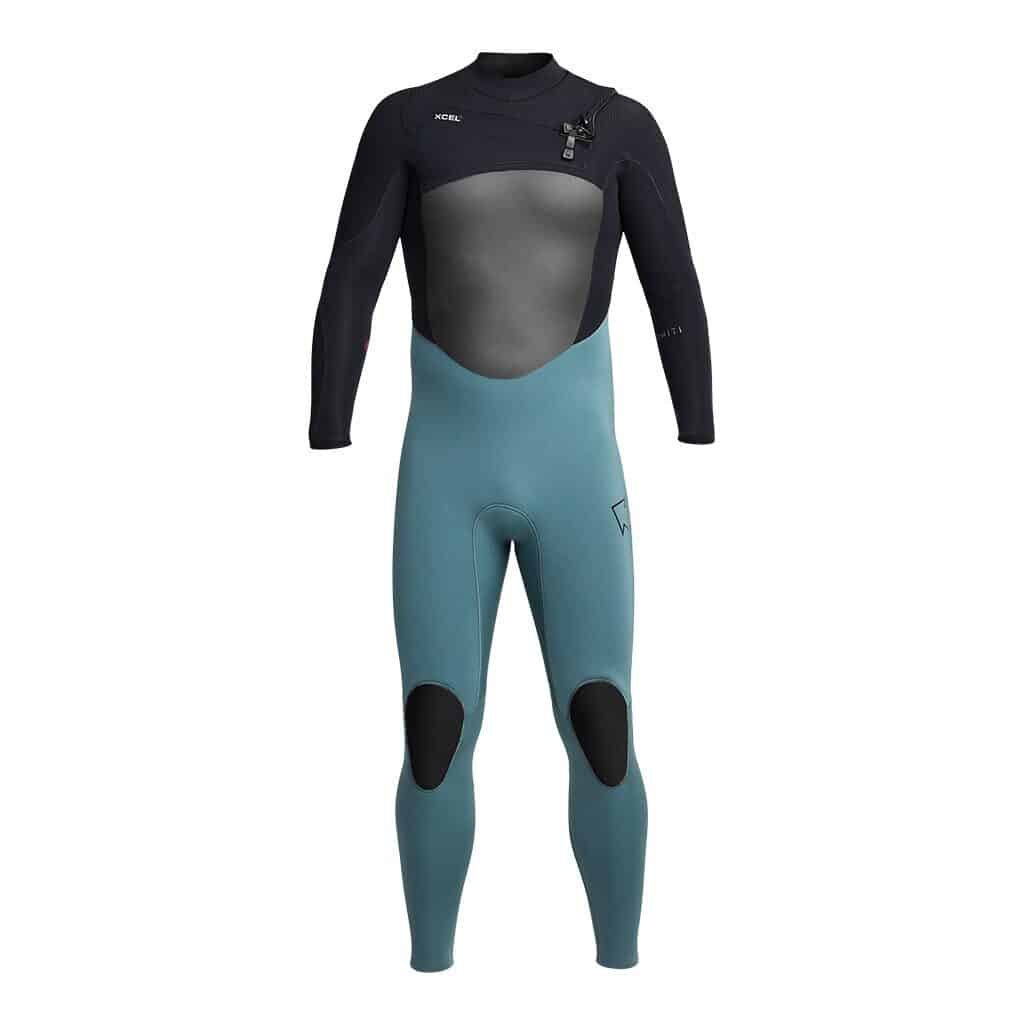
Specifications:
- Materials: Nanoprene Lite Japanese Limestone neoprene
- Thickness: Torso/Thigh – 3mm, Arms/Legs – 2mm.
- Zipper Design: Chest Zip.
- Suitable Temperatures: 16C to 18C.
- Weight: 44 ounces.
About:
Xcel’s Infiniti series is a more affordable option than the Drylock, with many of the same features but without the inner lining. The Infiniti, however boasts the same extremely high build quality that Xcel is known for.
Pros:
- Lightweight
- A top choice for core heat retention.
- Channel flex upper section and ultra flex lower section.
- Blindstitched with triple glue to keep water out.
Cons:
- Less warmth than other more expensive options
Summary:
If warmth is less of a concern for you, and at a better price point, the Xcel Infiniti might be a great option for you.
6. Vissla 7 Seas / Sisstrevolution 7 Seas 3/2 Wetsuit
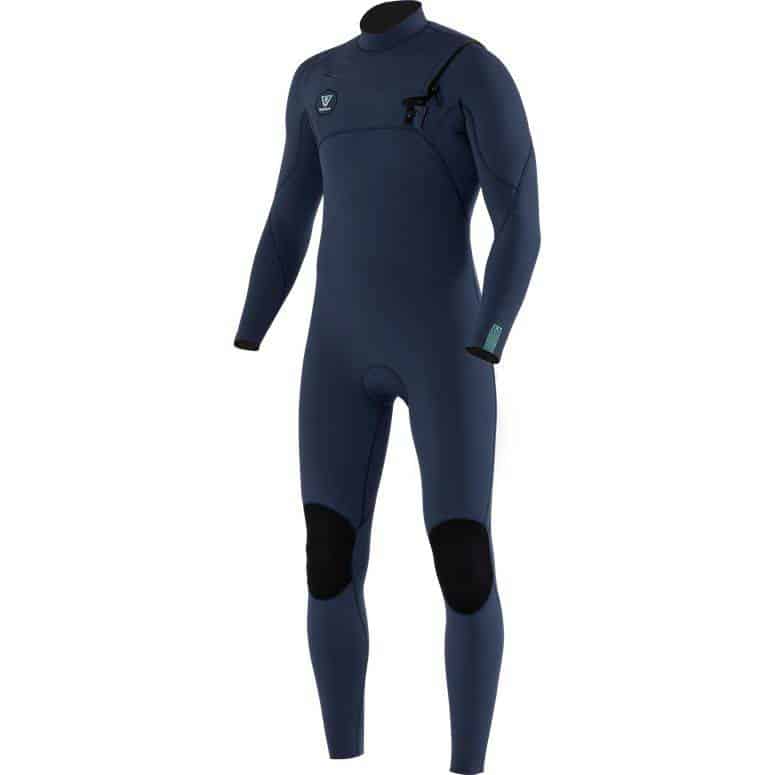
Specifications:
- Materials: Limestone based Neoprene.
- Zipper Design: Chest and Back Zip options
- Thickness: Torso/Thigh – 3mm, Arms/Legs – 2mm.
- Suitable Temperatures: 13C to 18C / 56 – 65° F
About:
The 7 Seas range is the value range for Vissla Wetsuits and stands by the mantra “Everything you need in a wetsuit, nothing you don’t”. Vissla has gone without the irrelevant features and designed a collection of wetsuits that are warm, flexible, quick drying and with minimal branding at an affordable price point which is extremely well reviewed and should appeal to a lot of surfers.
The Sisstrevolution 7 Seas is the women’s version of this wetsuit.
Key features include:
- 100% Super stretch limestone based neoprene – lighter, warmer, softer, stretchier, easier to put on and take off, and allows for more freedom of movement
- Thermal Brain Fuzz lining insulates heat and dries fast
- Dope Dyed Fabric – a softer, eco-friendly, anti-fade stretch jersey made by Bluesign approved mills
- Vissla super stretch Neo 2.0 tape allows for maximum seam sealing while having unrestricted stretch and comfort
- Glideskin neck design
Pros:
- Great value 3/2 wetsuit at this price point
- Users report how stretchy the suit is and flexible
- Great balance of flexibility and warmth
- Internal taping throughout and at high stress points
Cons:
- None noted.
Summary:
The Vissla & Sisstrevolution 7 Seas are great wetsuits which balance perfectly the warmth and flexibility, which is all you can really expect from a quality 3/2 wetsuit.
7. O’Neill Reactor II – Best Entry Level 3/2 Wetsuit
Specifications:
- Materials: Neoprene, Spandex, Nylon.
- Zipper Design: Back Zip.
- Thickness: Torso/Thigh – 3mm, Arms/Legs – 2mm.
- Suitable Temperatures: 16C to 18C.
- Weight: 43 ounces.
About:
The O’Neill Reactor 3/2 offers great bang for buck, providing a functional entry level surfing wetsuit for anyone looking for an entry level wetsuit that will get the job done.
Pros:
- Great value affordable price point
- Smoothskin wind resistance.
- Flexible designs with seamless paddle designs.
- Highly stretchy Neoprene for better movement.
- Sleek and lightweight.
- A top choice for entry-level surfing wetsuit
Cons:
- Some users note zipper malfunctions occurring over time
- You have to buy one up in size for a perfect fit.
Summary:
This O’Neill 3/2 Wetsuit is a great entry level and affordable wetsuit for surfing. It won’t win any awards but for the price point you can’t really go wrong.
Buyers Guide & FAQ
What is a 3/2 wetsuit?
If you’re not familiar with wetsuit lingo, you might be wondering what the numbers mean? Well it’s not as complicated as it might seem – the first number refers to the thickness of the wetsuit in the torso area which generally extends from the chest through to thigh areas. Being 3 mm this provides the greatest warmth to this area. The second number refers to the arms and legs. At 2 mm this allows a greater range of movement in the arms and legs where you require more flexibility for paddling and in the legs for board riding.
A thick suit will allow less free movement, while a thinner suit will make you feel more comfortable while paddling and surfing longer.
3 2 wetsuit temp
The challenge for the 3/2 wetsuit is to get a good balance between providing sufficient warmth and enough flexibility. In terms of 3 2 wetsuit water temp range – we’re really talking about the cross section between colder to warmer waters and it’s important to consider that some individuals feel the cold more than others so ultimately it’s a personal decision when considering the amount of warmth that you need from a wetsuit.
The core range of water temperature for a 3/2 wetsuit is 16 – 18 C (60.8 – 64.4 F), but the range as indicated by the wetsuits we’ve selected in this guide range from 13 C – 20 C. The lower end of this temp range is comprised of wetsuits with high grade materials and specifically inner linings. Improvements in wetsuit technology are allowing thinner wetsuits to withstand lower temperatures that traditionally wouldn’t have been possible. Generally these wetsuits cost more but not always (eg. Need Essentials 3/2 and Vissla 7 Seas).
3 2 wetsuit v 4 3
As we’ve mentioned above, the temperature range of 3/2 wetsuits is getting wider with improvements in materials and advancements. However, if you’re surfing in temperatures of 14-15 C or lower you would probably be better off opting for a 4/3 wetsuit. For less than the price of the more expensive 3/2 wetsuits in this guide, you will definitely find a quality 4/3 wetsuit that will provide better overall warmth for temperatures of low to mid teens (celsius) or 53-59 F range.
Materials
The majority of wetsuits are made of a synthetic rubber called neoprene. Neoprene is either derived from petroleum (most common) or limestone.
Limestone based neoprene is considered the more environmentally sound of the two (and is marketed as such by wetsuit brands using it), but both are non renewable and both require substantial chemical application in the refining process.
There is a slow but now steady push amongst wetsuit manufacturers to move towards more sustainable materials and Patagonia has led the way, utilising a natural rubber called Yulex in their wetsuits. We believe this trend will continue over the coming years.
Thickness
Thickness and flexibility go hand in hand. As we mentioned previously, a the challenge for the 3/2 wetsuit is to get a good balance between the two – providing sufficient warmth but with enough flexibility so that you do not feel the weight and limitation of a thicker wetsuit.
A thick suit will allow less free movement, while a thinner suit will make you feel more comfortable while paddling.
Chest zip wetsuit vs back zip vs zipperless
Wetsuits come with a number of zip/entry configurations including chest zip, back zip and zipperless. The most common in modern 3/2 wetsuits is the chest zip. Each have their pros and cons and it’s really a personal preference. Some people swear by chest zips while others will only wear back zips.
Chest zip wetsuits come with a flap on the chest area with a small, which is a smaller opening. It ultimately means you may find it difficult to get the wetsuit on or off, but the suit will be more flexible and is known as a better system to keep cold water out.
Back zippers are long and allow you to open up the wetsuit much more – so they are far easier and quicker to get on or off. But you will have to compromise on flexibility, and you will have a loose collar as well so potentially more flushing of water when duck diving or under heavy waves.
Zipperless wetsuits are relatively new on the scene and generally found in lighter/thinner high performance wetsuits. The main benefit of these wetsuits is a much greater level of flexibility through the chest and shoulders increasing performance and comfort.
Stitching and Seams
There are four different types of stitching and seaming available; overlocking, flat locking, welded seaming, and glued-and-blind stitching.
Overlocking is pretty simple to join the two fabric pieces but is least effective in keeping the water away. Flat locking involves overlapping two pieces of fabric and then seaming. They are a bit more breathable, but water still doesn’t stay at bay. So they both are least effective.
Glued and blind stitching is of better quality because the fabric sections are glued and stitched to make it watertight. Welded stitching involves silicone urethane sealing to combine neoprene fabric sections, and it is the best in terms of keeping the water away. However, it’s slightly expensive.
Internal Taping
You will notice that higher quality wetsuits have internal taping and often in the context of providing more warmth. The internal taping doesn’t make the wetsuit warmer.
The seams of a brand new wetsuit are completely sealed so the internal taping will not add to warmth factor however as the seams start to break down which they will do over time, the internal taping provides an internal seal which stops leaking and therefore prolongs the life of the wetsuit and maintains warmth.
How do wetsuits work?
As a basic outline, wetsuits trap a thin layer of water between the Neoprene and your skin.
This water layer gets heated up with your body heat and keeps you warm. You have to make sure that the wetsuit you choose for yourself is a comfortable yet close fit. Otherwise, those cold water will flush out that thin layer of warm water.
Do I need other accessories to go with my wetsuit as well?
Generally when surfing with a 3/2 wetsuit, unless you are really testing the limits of your wetsuit at very cold temperatures, you are unlikely to need gloves, hoods, or boots. Hoods are very effective in preventing that feeling of brain freezing.
With gloves, you can prevent numb fingers and boots, allowing you to keep yourself safe from hitting the rocks while swimming. Make sure they are a close fit as well, and you will feel comfortable and lightweight out there.
We hope you’ve got some value you out of our 3/2 wetsuit buyers guide. If you’ve got any comments or feedback on any of these wetsuits or others, we’d love to hear from you in the comments below.
We hope you’ve got some value out of our best 3/2 wetsuit buyers guide. If you’ve got any questions, comments or feedback on any of these wetsuits or others, we’d love to hear from you in the comments below.
You may be interested in some of our recent posts:

